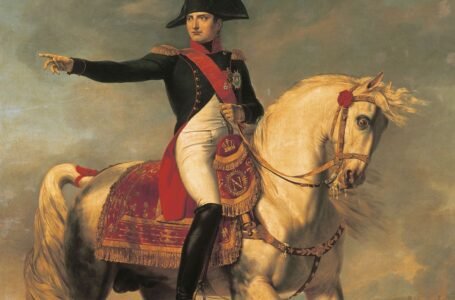Dhumavati: The Widow Goddess of Death and Misfortune
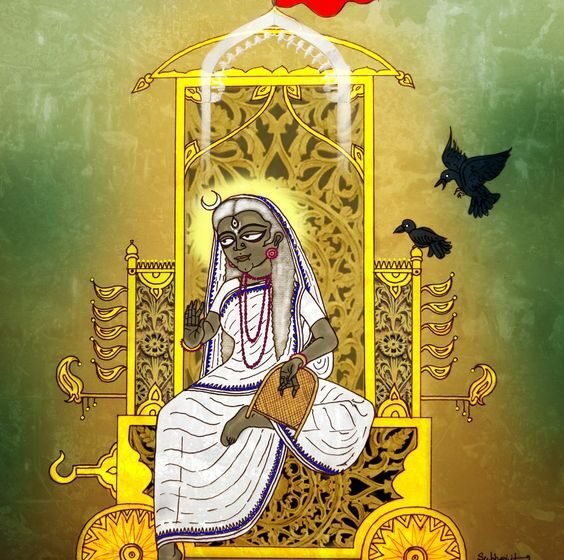
Dhumavati is the seventh goddess in the Mahavidyas of Shaktism, a female oriented worship of the divine, where the divine feminine is given the utmost importance and is viewed as the ultimate reality. Her name Dhumavati is a Sanskrit name and literally translates into the smoky one. Although the goddess is not widely worshipped and is only worshipped in smaller secluded areas, she holds an important position in the Dasa Mahavidyas and within the sect of Shaktism as the fearsome manifestation of the Mahadevi. She is seen as the darker and sombre side of spirituality. She is said to be the goddess of poverty, misfortune, and detachment, and possesses negative aspects of life that lead to ultimate liberation. Her smoky aura in Hinduism is associated with dissolution of the universe, and the void that was present before the creation was made.

There are many legends narrating the birth of the goddess Dhumavati. According to the text Maha Bhagavata Purana, Sati the first consort of Shiva, was the daughter of Daksha, a powerful king who disapproved of her marriage to Shiva, the ascetic god. Daksha organized a grand yajna but deliberately did not invite Sati and Shiva. Insulted and deeply hurt by her father’s disrespect towards her husband, Sati decided to attend the yajna uninvited, despite Shiva’s protests. Upon Shiva’s threats of leaving her, Sati enraged at no hopes of reconciliation transforms herself into the ten Mahavidyas, each manifestation of hers blocking a different direction.
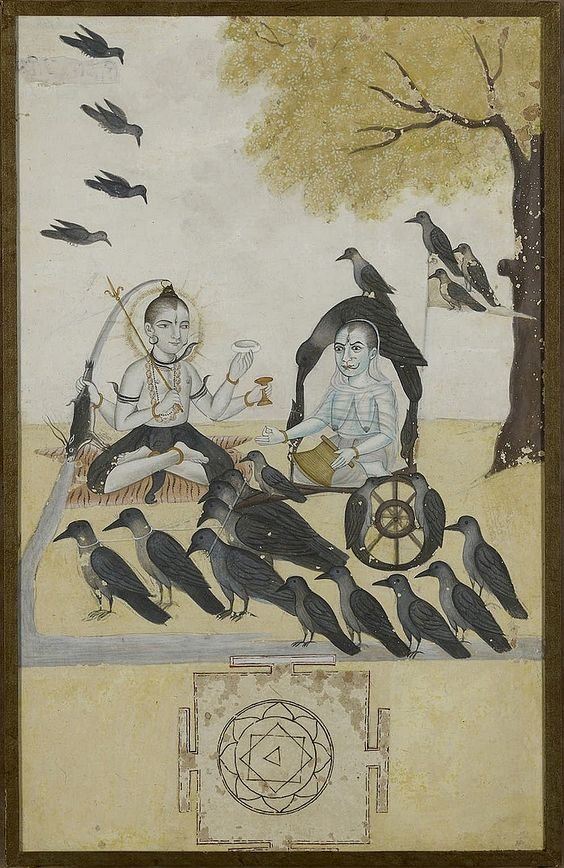
In another legend related to the goddess Dhumavati, Sati threw herself into the sacrificial fire and commits suicide. From this sacrificial fire then emerged a blackened Dhumavati with the smoke on Sati’s body. Dhumavati is also known as the insulted and outraged avatar of Sati. In another narration, Dhumavati is associated with insatiable hunger and the consuming nature of desire and time. In this legend, mentioned in Pranatosini Tantra the widowhood of Dhumavati is explained. Parvati, another incarnation of Sati and the consort of Shiva, once experienced an overwhelming hunger. Despite consuming all the food available, her hunger remained unquenched. In a moment of uncontrollable need, she consumed her own husband, Shiva, embodying the all consuming nature of desire and time. Shiva requests her to disgorge him, and when she does, Shiva enraged rejects her and curses her to widowhood by assuming the form of a widow. This nature of her represents her inauspiciousness.
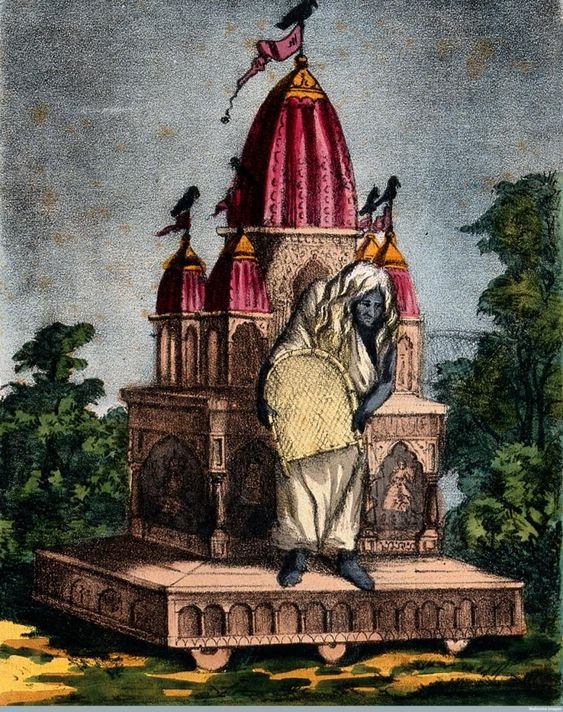
Dhumavati is often identified with Alakshmi, meaning ‘not Lakshmi,’ the goddess of misfortune, strife, and poverty. Alakshmi is said to have some resemblance to the Vedic goddess Nirriti mentioned in the Rig Veda, who is a goddess of death, decay, bad luck, hunger and poverty. Dhumavati’s equation with Alakshmi emphasizes on her role as a deity who governs misfortune and the darker sides of life. Stories of Dhumavati put forth the idea of destruction and decay as significant to the process of cosmic cycle. Sati’s immolation led to her transformation into Dhumavati, the goddess of smoke and destruction, so too must individuals undergo periods of suffering and loss to achieve spiritual growth and renewal. On the other hand Parvati’s insatiable hunger and her transformation into Dhumavati highlight the destructive nature of uncontrollable desires. This story acts as a reminder for the devotees to control their desires in order to prevent them from consuming one’s spiritual growth. Additionally, Dhumavati’s widowhood stands for the ultimate form of detachment. Through her widowhood the goddess teaches her devotees the importance of let going the worldly attachments and desires in order to achieve mosksha.

In her iconography the goddess is depicted as thin, ugly, pale and grey in complexion. Unlike other goddesses who are adorned in bright red garments and jewellery, Dhumavati is seen wearing no jewellery and clothes that are dirty and old. In her depictions she is shown riding a horseless chariot, while holding a winnowing basket in one hand and her other hand fixed in a mudra of knowledge giving gesture. Dhumavati means the smoke one, and in her portrayals she is shown surrounded by smoke. The smoke symbolizes the aftermath of fire, destruction, and transformation. This shows the impermanency of nature of life and the purification that comes along with destruction. Fire which causes smoke represents the power to destroy the old and create the new. Dhumavati stands for this destructive power. Dhumavati is also depicted on the cremation grounds and is also worshipped in such sombre areas. Her association with the cremation grounds link her with death, decay, and the fleeting nature of life. Cremation grounds where the dead are burned are symbolic of the final transformation, where the physical body returns to its elemental state.

The winnowing basket that she is seen holding, is a tool used to separate grain from chaff. This symbolizes the ability to discern the eternal soul from the temporary physical body, and act as a tool to differentiate between the importance of spiritual awakening and the desires of the material realm, and the need to separate truth from illusion. Dhumavati in some of her portrayals is seen riding a crow as her vehicles or has a crow depicted around her. Crow is generally a bird that is linked with death, omens, and the supernatural and in many cultures such as Norse traditions practiced by the Vikings believed this to be true. The crow in her depictions shows her connection to the inauspiciousness and the otherworldliness.
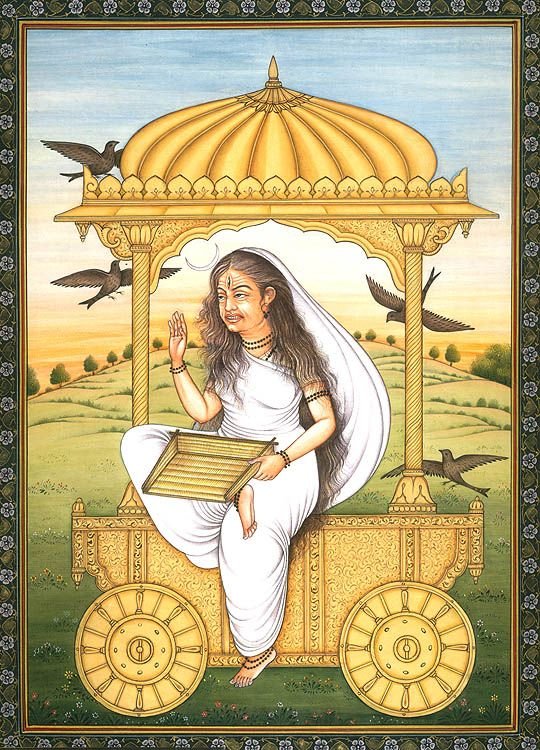
Dhumavati, despite her fearsome appearance in some parts of India is seen as a protective deity. By embodying fear, it is believed by her followers that she provides protection against the actual misfortunes and negative forces of life. Devotees believe that worshipping Dhumavati can help them overcome obstacles and achieve spiritual liberation. The goddesses’ teachings and her role as the knowledge giver, argues the importance of the power of suffering and renunciation of worldly desires in order to grain spiritual liberation. Her appearance teaches the devotees to not be deeply tangled in the worldly desires as this entanglement will lead them astray and forgetful of the truth and ultimate reality of the cosmic universe.
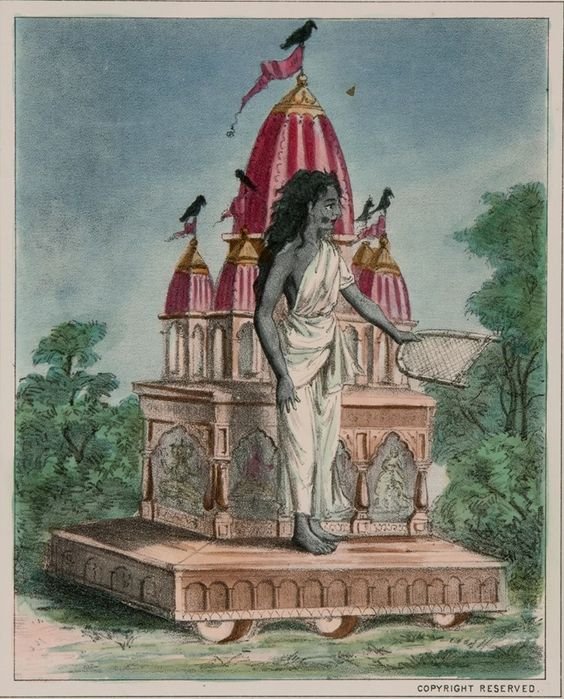
The goddess’s association with suffering and loss teaches devotees to embrace these experiences as essential for spiritual resilience and growth. By accepting suffering, devotees can transcend it and achieve deeper spiritual insights. Her teachings and worship also teaches her devotees to meet life in a different viewpoint. Dhumavati’s imagery and symbolism allows her devotees to confront the truths of their mortality and impermanence of life. This confrontation leads to a deeper understanding of the nature of existence and to look at the bigger picture by focusing on the eternal soul. Just like the goddess herself, when the devotees embrace suffering and loss, they form and achieve a deeper spiritual resilience by fighting the worldly illusions and desires. She teaches that suffering is a part and parcel of life and that an individual can only achieve true spiritual growth by facing and accepting this element of life. As it is believed, that sadness and suffering can always lead a man to the road to hopelessness and defeat. But Dhumavati teaches to show optimism even in such a dark phase of life.

Dhumavati, or the smoky one, represents the dark, fearsome aspects of the Divine Feminine. Her imagery and mythology challenges devotees to confront and integrate the darker aspects of existence, fostering a deeper understanding of the transitory nature of life, and the importance of detachment. Through the teaching of the knowledge giver, an individual can learn to embrace all aspects of existence—the bright, happier side; and the sad, darker side—as part and parcel of life, as well as the essential elements to the path of spiritual enlightenment.
